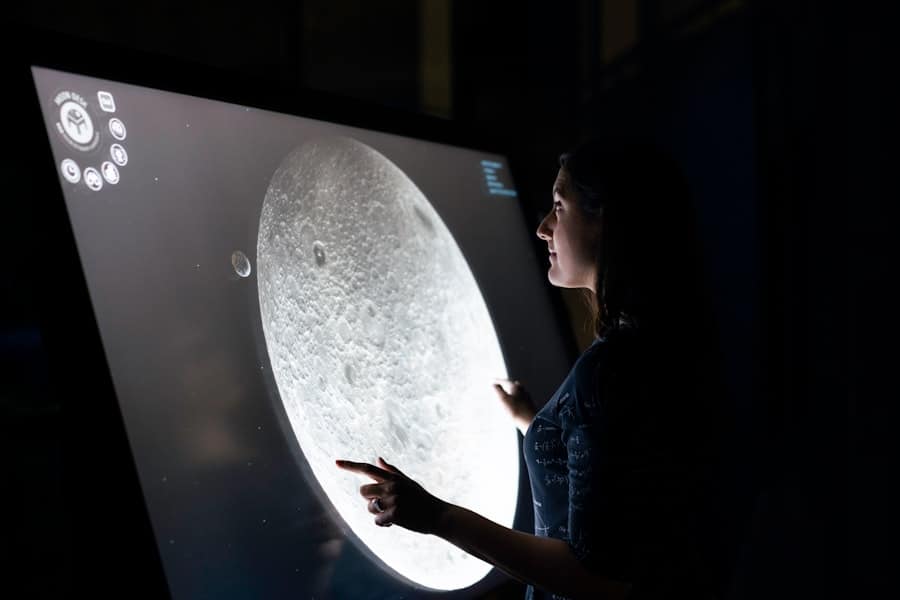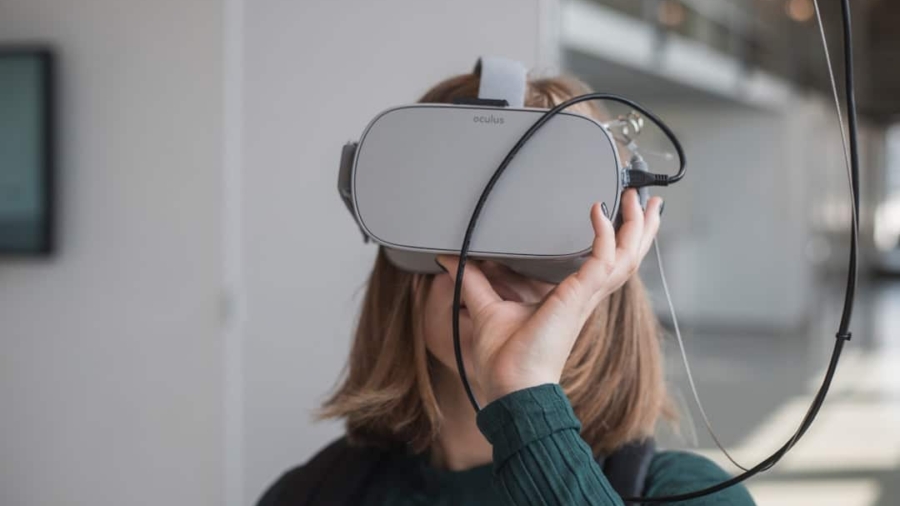Hands-on STEM education is a critical component of modern learning, particularly in the fields of science, technology, engineering, and mathematics. This approach emphasizes experiential learning, where students engage directly with materials and concepts rather than passively absorbing information through lectures or textbooks. The significance of hands-on education lies in its ability to foster critical thinking, problem-solving skills, and creativity.
By allowing students to experiment, build, and innovate, hands-on STEM education cultivates a deeper understanding of complex concepts and encourages a lifelong passion for learning. Moreover, hands-on experiences in STEM education bridge the gap between theoretical knowledge and real-world application. For instance, when students conduct experiments in a chemistry lab or design a prototype in an engineering class, they are not only learning about scientific principles but also applying them in practical scenarios.
This experiential learning process enhances retention and comprehension, as students can see the immediate impact of their work. Furthermore, hands-on activities often promote collaboration and communication among peers, essential skills in today’s interconnected world. As students work together to solve problems or complete projects, they develop teamwork abilities that are invaluable in both academic and professional settings.
Key Takeaways
- Hands-on STEM education is crucial for developing critical thinking and problem-solving skills in students.
- Simulation labs play a vital role in providing practical experience and real-world application of STEM concepts.
- Advancements in technology, such as virtual reality and augmented reality, are enhancing the capabilities of simulation labs.
- Simulation labs have a significant impact on student learning outcomes, improving retention and understanding of STEM subjects.
- The future of hands-on STEM education will see trends and innovations that integrate simulation labs with emerging technologies and interdisciplinary approaches.
The Role of Simulation Labs in STEM Education
Enhancing Understanding and Building Confidence
This hands-on approach not only enhances understanding but also builds confidence as students can make mistakes and learn from them without the high stakes associated with real-life applications. For instance, medical students can practice surgical techniques on virtual patients, while engineering students can simulate the stress tests of materials under various conditions.
Fostering Innovation and Creativity
The role of simulation labs extends beyond mere practice; they also serve as platforms for innovation and creativity. In these labs, students can design their experiments or projects, test hypotheses, and iterate on their designs based on feedback from the simulation outcomes. This iterative process mirrors the scientific method and engineering design principles, reinforcing the importance of experimentation and adaptation in STEM fields.
Collaborative Learning and Interpersonal Skills
Simulation labs often incorporate collaborative tools that enable students to work together on projects, fostering a sense of community and shared learning experiences that are crucial for developing interpersonal skills.
Advancements in Technology for Simulation Labs

The evolution of technology has significantly enhanced the capabilities of simulation labs in STEM education. Virtual reality (VR) and augmented reality (AR) have become increasingly prevalent, offering immersive experiences that engage students on multiple sensory levels. For instance, VR can transport students into a 3D environment where they can explore the human body or navigate through complex engineering systems.
In addition to VR and AR, advancements in artificial intelligence (AI) are revolutionizing how simulation labs operate. AI-driven simulations can adapt to individual student performance, providing personalized feedback and tailored challenges that cater to varying skill levels.
This adaptability ensures that all students can progress at their own pace while still being challenged appropriately. Furthermore, data analytics tools integrated into simulation labs allow educators to track student engagement and performance metrics in real-time. This data-driven approach enables instructors to identify areas where students may struggle and adjust their teaching strategies accordingly, ultimately enhancing the overall learning experience.
The Impact of Simulation Labs on Student Learning
The impact of simulation labs on student learning is profound and multifaceted. Research has shown that students who engage in simulation-based learning often demonstrate higher levels of retention and understanding compared to those who rely solely on traditional instructional methods. For example, a study conducted at a university found that nursing students who practiced clinical skills in a simulation lab performed significantly better on practical exams than their peers who had only theoretical training.
This finding underscores the effectiveness of experiential learning in preparing students for real-world challenges. Moreover, simulation labs promote active learning by encouraging students to take ownership of their educational journey. In these environments, learners are not passive recipients of information; instead, they become active participants who must think critically and make decisions based on their observations and analyses.
This active engagement fosters a sense of agency and responsibility among students, motivating them to delve deeper into their subjects. Additionally, the collaborative nature of many simulation lab activities enhances communication skills and teamwork abilities, preparing students for the collaborative work environments they will encounter in their future careers.
The Future of Hands-On STEM Education: Trends and Innovations
As we look toward the future of hands-on STEM education, several trends and innovations are emerging that promise to further enhance the learning experience. One notable trend is the increasing integration of interdisciplinary approaches within STEM curricula. Educators are recognizing the value of blending subjects such as art with science or mathematics with technology to create more holistic learning experiences.
This interdisciplinary focus encourages students to think outside traditional boundaries and fosters creativity—an essential skill in today’s rapidly evolving job market. Another significant innovation is the rise of maker spaces and innovation hubs within educational institutions. These collaborative spaces provide students with access to tools such as 3D printers, robotics kits, and electronics components, enabling them to bring their ideas to life through hands-on projects.
Maker spaces encourage experimentation and innovation while promoting a culture of entrepreneurship among students. As these spaces become more prevalent in schools and universities, they will play a crucial role in shaping the future landscape of hands-on STEM education by empowering students to become creators rather than just consumers of technology.
Addressing Challenges in Implementing Simulation Labs

Financial Constraints
One significant hurdle is the cost associated with acquiring advanced technology and maintaining these labs. High-quality simulation equipment can be expensive, and institutions may struggle to secure funding for initial investments as well as ongoing maintenance costs.
Disparities in Access
Additionally, there may be disparities in access to simulation labs between different educational institutions, particularly between urban and rural areas or between well-funded private schools and under-resourced public schools.
Training and Support
Another challenge lies in training educators to effectively utilize simulation labs as teaching tools.
Professional development opportunities focused on simulation-based teaching strategies are essential for equipping educators with the skills they need to maximize the potential of these labs. Furthermore, ongoing support from administration is crucial to ensure that educators feel empowered to experiment with new teaching methods and technologies without fear of failure.
The Benefits of Integrating Simulation Labs into STEM Curriculum
Integrating simulation labs into STEM curricula offers numerous benefits that extend beyond enhanced learning outcomes. One key advantage is the ability to provide students with exposure to real-world scenarios that they may encounter in their future careers. For instance, engineering students can simulate design challenges faced by industry professionals, while medical students can practice patient care scenarios that require critical decision-making skills.
This exposure not only prepares students for their chosen fields but also instills confidence as they transition from academic settings to professional environments. Additionally, simulation labs foster an environment conducive to innovation and creativity. By allowing students to experiment freely without fear of failure, these labs encourage risk-taking and exploration—qualities that are essential for driving progress in STEM fields.
Students learn to approach problems from multiple angles and develop solutions that may not be immediately apparent through traditional methods. This creative problem-solving mindset is invaluable in today’s fast-paced world, where adaptability and innovation are key drivers of success.
The Potential for Simulation Labs to Shape the Future of STEM Careers
The potential for simulation labs to shape the future of STEM careers is immense. As industries increasingly rely on advanced technologies and data-driven decision-making processes, the skills developed through simulation-based learning will be highly sought after by employers. Students who have engaged with simulation labs will possess not only technical knowledge but also critical soft skills such as collaboration, communication, and adaptability—traits that are essential for thriving in dynamic work environments.
Furthermore, as simulation technology continues to evolve, it will likely play an even more significant role in workforce training programs across various industries. Companies may adopt similar simulation-based training methods to prepare employees for complex tasks or scenarios they will face on the job. This trend could lead to a more skilled workforce equipped with practical experience before entering the job market.
Ultimately, simulation labs represent a powerful tool for shaping not only individual careers but also the future landscape of STEM professions as a whole, fostering a generation of innovators ready to tackle the challenges of tomorrow.
In addition to utilizing simulation labs for hands-on STEM education, educators can also incorporate the use of 3D modeling software to enhance the learning experience. This article on the best free software for 3D modeling in 2023 provides valuable insights into the top tools available for creating realistic and interactive 3D models. By integrating these software programs into the curriculum, students can further engage with STEM concepts and develop essential skills for the future.
FAQs
What is STEM education?
STEM education refers to the teaching and learning of science, technology, engineering, and mathematics subjects. It aims to equip students with the skills and knowledge needed to succeed in these fields.
What are simulation labs in STEM education?
Simulation labs in STEM education are physical or virtual spaces where students can engage in hands-on, experiential learning activities related to science, technology, engineering, and mathematics. These labs often use simulations to replicate real-world scenarios and allow students to apply theoretical knowledge in a practical setting.
How do simulation labs enhance STEM education?
Simulation labs enhance STEM education by providing students with opportunities to apply theoretical concepts in a practical, hands-on setting. They allow students to develop problem-solving skills, critical thinking abilities, and a deeper understanding of STEM subjects through experiential learning.
What is the future of hands-on STEM education through simulation labs?
The future of hands-on STEM education through simulation labs is likely to involve advancements in technology, such as virtual reality and augmented reality, to create more immersive and realistic learning experiences. Additionally, there may be a greater emphasis on interdisciplinary collaboration within simulation labs to address complex real-world challenges.

